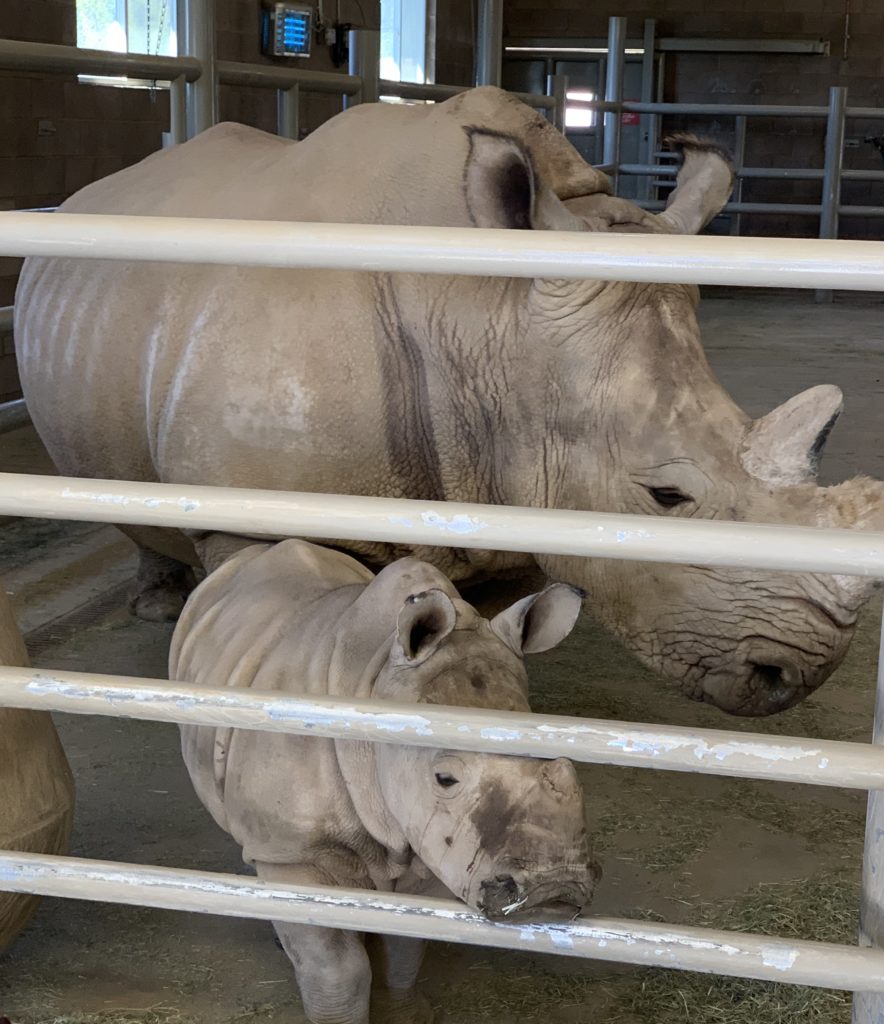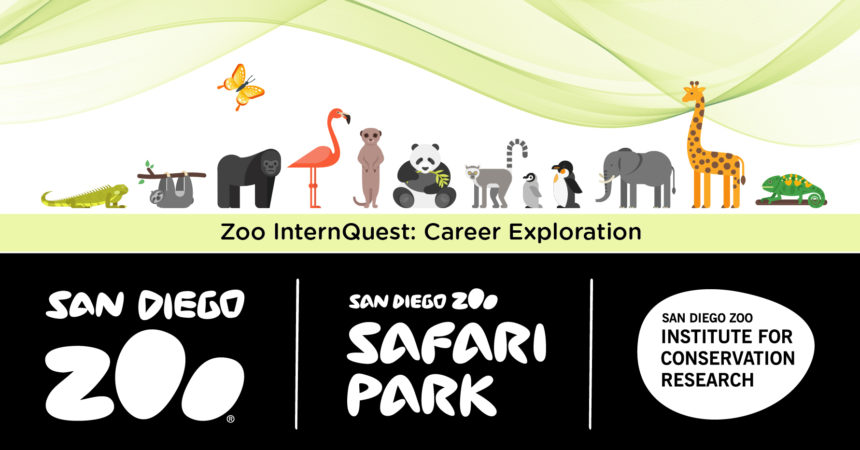Zoo InternQuest is a seven-week career exploration program for San Diego County high school juniors and seniors. Students have the unique opportunity to meet professionals working for the San Diego Zoo, Safari Park, and Institute for Conservation Research, to learn about their jobs, and then blog about their experience online. Follow their adventures here on the Zoo’s website!

Weston Popichak is a Lead Keeper at the San Diego Zoo Safari Park’s Nikita Kahn Rhino Rescue Center (RRC). With about ten years of experience working with elephants, rhinos, and baby animals, Mr. Popichak has earned the right to be a lead keeper. As a lead keeper, he is responsible for conducting training sessions, and monitoring the rhinos’ behavior and eating habits to ensure they are healthy. From a young age, Mr. Popichak has always loved animals and has had a passion for helping those in need. Although in high school he was challenged with determining his career path, either helping people by becoming a firefighter or helping animals by becoming a keeper. After high school, he attended his local community college to fulfill his prerequisite requirements, then applied for Moorpark College to gain more experience and knowledge in animal behavior. Afterward, he applied to be a keeper at the San Diego Zoo Safari Park and was accepted. In addition to his keeper responsibilities, Mr. Popichak has dedicated his time to raising awareness and educating others about saving endangered species. Through his actions both in and out of uniform, Mr. Popichak has devoted his life to preserving, protecting and conserving animals.

The Rhino Rescue Center started in November 2015. The two newest additions Future and Edward, are not only adorable but they are also a scientific first, as they are the first two successes of rhino reproduction using artificial insemination in North America. Artificial insemination offers a lot of perks since it is more efficient and controlled, and also allows veterinarians to gain experience that they may need moving forward. This is part of a large scale plan to hopefully be able to use in-vitro fertilization, which is where the egg is fertilized outside of the surrogate mother and the embryo is placed inside the uterus. The goal is to have a southern white rhino surrogate mother successfully give birth to a northern white rhino. Since there are currently only two female northern white rhinos left in the world, and both are past breeding age, this is extremely new territory for science. If they succeed it would be the first species brought back from extinction with this method. The estimate for when they’ll start attempting a repopulation of the northern white rhino is 10-15 years and considering that rhino gestation tends to take around 17 months, there’s a lot of waiting to be done. If successful, the priority would be on building a healthy population and then finding a safe environment, before they can start being reintroduced into the wild. This may solve the problem of being extinct but does not address the issue that brought them to extinction in the first place.

Meet Future, the second southern white rhino born in North America via artificial insemination, seen here with mom. Future’s playmate, Edward, made history only a year before, as he was the first southern white rhino born in North America through this process.
All rhinos continue to be threatened by poaching, causing them to become endangered. Rhinos are poached for their horns because many believe they contain medicinal qualities. However, rhino horns are comprised of keratin which is a protein that makes up our hair and fingernails. The last two northern white rhinos remain under constant guard in Kenya to ensure they are protected from potential poachers. Poaching is a huge problem even for the southern white rhino as their horns are in high demand. As rhinos suffer severe threats in the wild, places such as the San Diego Zoo help to translocate many rhinos into safer habitats. Wallis, a southern white rhino who came to the RRC in November 2015, arrived with a bullet lodged in her side. With help from the San Diego Zoo Safari Park veterinarians, the bullet was removed over time with careful attention. As she now has a large scar on her side, it is a continuous reminder of how poachers continue to endanger these amazing animals. Rhinos play large roles in the ecosystem by fertilizing grass, they are important grazers, and without them many plant communities could be changed, ultimately threatening other species in the process. If we ever want to see a healthy and growing rhino population we need to find a solution to this threat of poaching.

Though it is evident that Mr. Popichak loves helping with the conservation of these rhinos, he especially loves his coworkers and his relationship with them. He also enjoys the training aspect of his job and the “aha moment” when an animal finally understands the task he set out to train. He likes how every rhino has a distinct personality and even their own favorite snacks. He has worked with many animals but his favorite project thus far has been helping to rehabilitate the rhino population, as he likes making a positive difference by helping to revive an extinct species. Mr. Popichak shared a few of his other most memorable moments from his years at the Park, such as watching with excitement as baby elephants had a four-way standoff over a mud wallow, or bottle feeding baby gorillas. At his current position at the RRC, his most memorable moment was when the bullet from a failed poaching attempt was removed from Wallis. Clearly, Mr. Popichak has a lot to love as a keeper, but these are just some of the highlights of his career so far.


If you’d like to become a keeper just like Mr. Popichak, he has a few helpful tips. He recommends attending either Santa Fe College in Florida, or studying at Moorpark Community College in Los Angeles to gain more experience in understanding animal behavior. He advocates for Moorpark, explaining that they have a zoo on campus where they teach you to work with a variety of animals. Mr. Popichak also recommends volunteering at the Zoo, or getting an entry level position, in order to get your foot in the door. Certain skills that would benefit one in this career are flexibility as well as the ability to adjust and remain calm under pressure. When working with animals there may be times when things don’t go as planned, but Mr. Popichak assures that staying calm will benefit both you and the animals. Lastly, for those questioning a future career as a trainer, determine whether you’d rather have a job that pays more or one that is more fulfilling. Work is at least one third of your life so he believes it’s more important to find a job you’ll love, and if that happens to be working at the San Diego Zoo, Mr. Popichak wants you to “go for it”.

Mr. Popichak’s love for animals and interest in conservation is sure to benefit the rhino species and any animal he chooses to work with. As a lead keeper at the RRC he finds joy in not only training and monitoring rhinos but also in educating others. He gave us all an exciting look at the potential for artificial insemination to repopulate the rhino species and act as a trial run for in-vitro fertilization. He also allowed us a unique opportunity to tour the facility and meet the rhinos living there. We were also fortunate enough to learn about his own personal insight on animals and even advice for anyone interested in the same field. He gave us all an experience we will surely never forget.
Week One
Winter Session 2020


